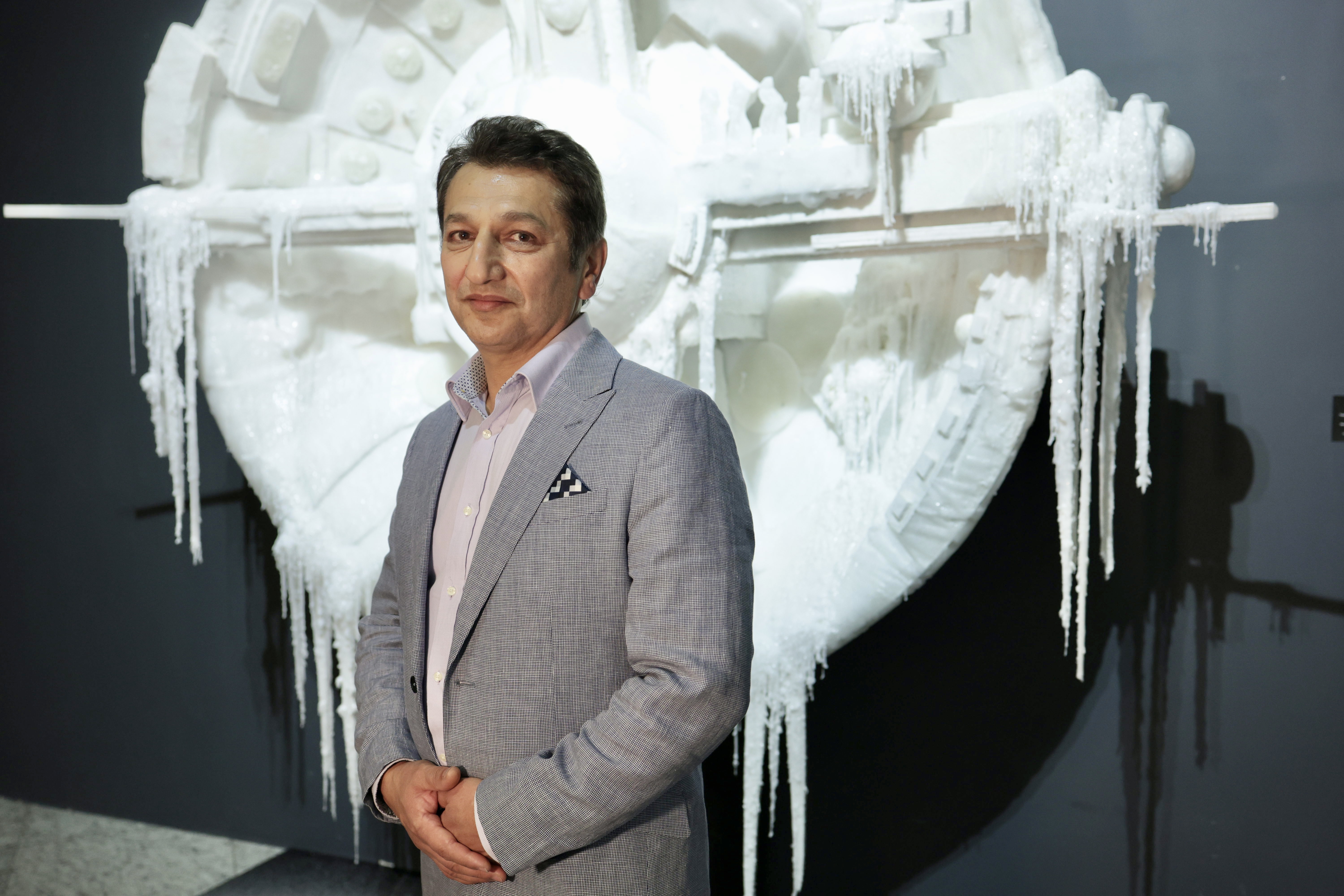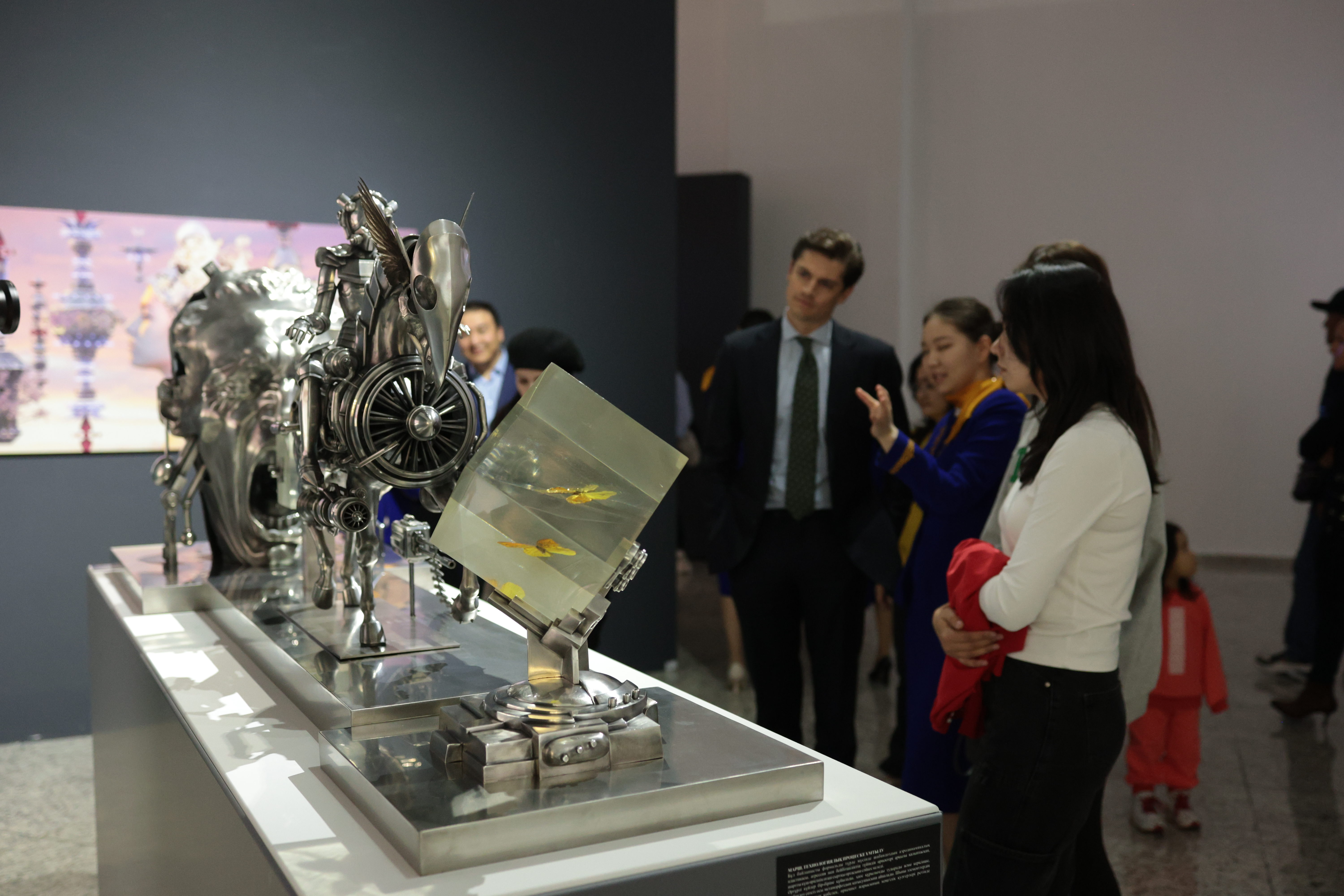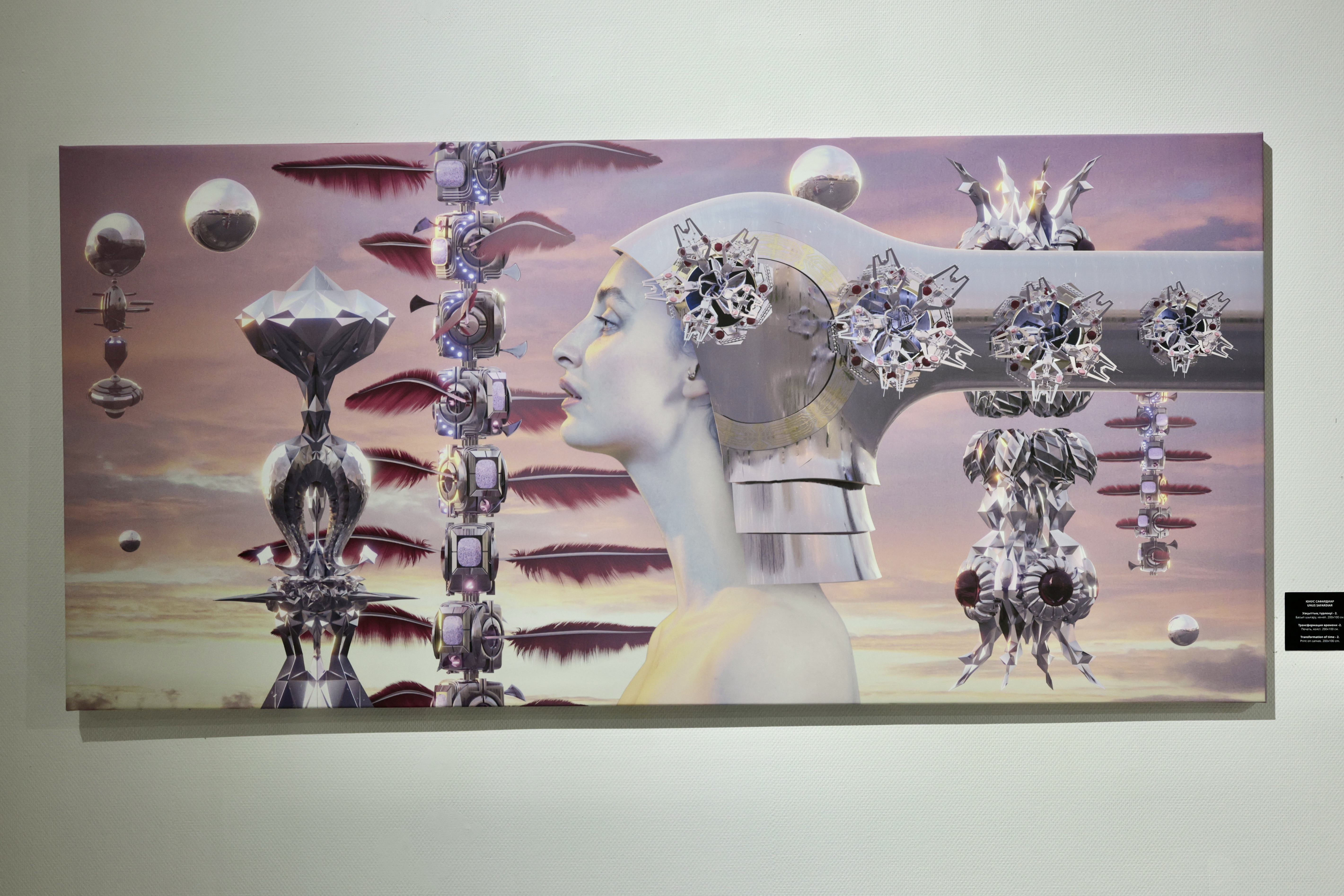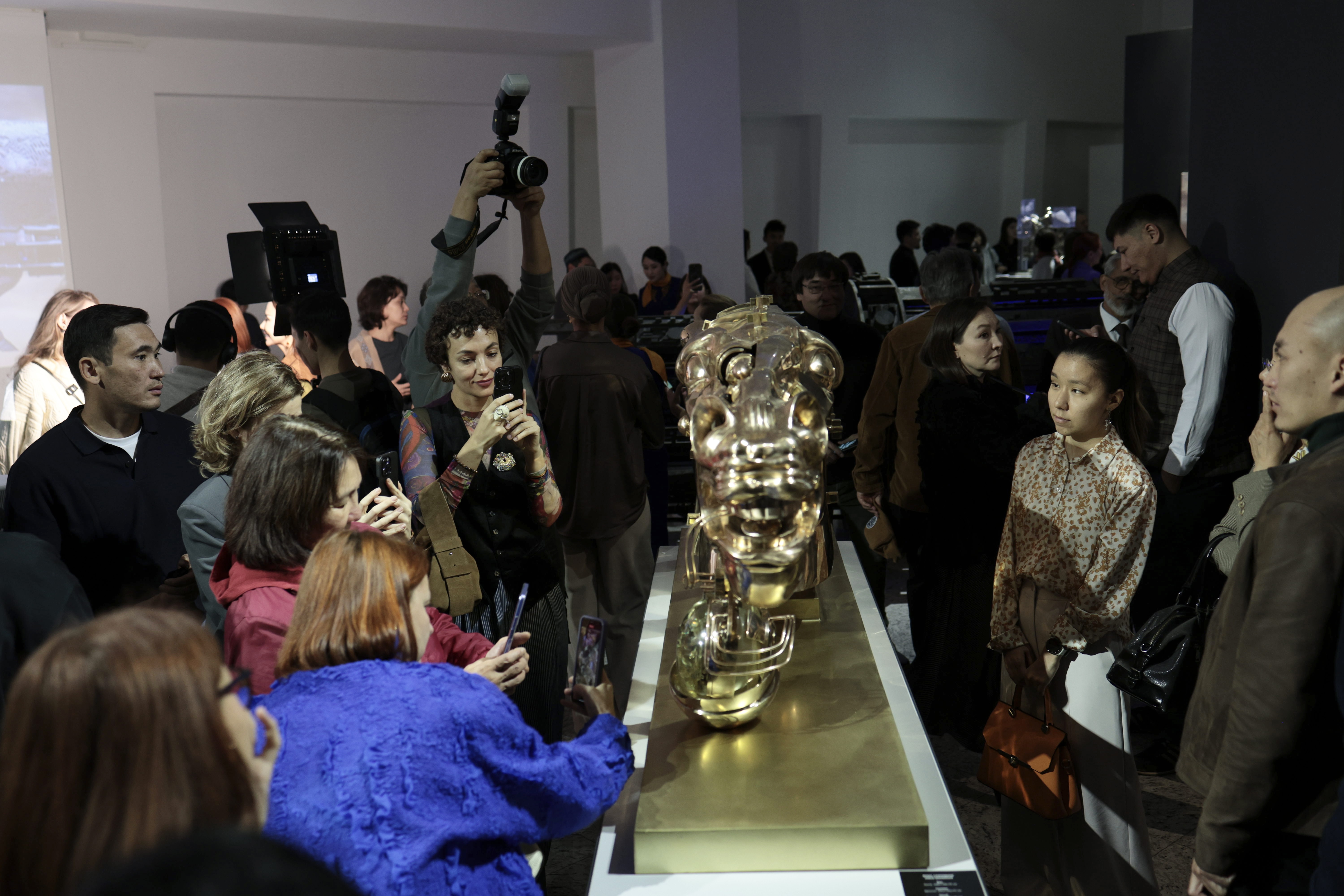Exclusive: British sculptor Yunus Safardiar to dedicate new creation to Kazakhstan

A British sculptor, whose works adorn London's Regent's Park, the skyscrapers of the Moscow City complex and Novosibirsk Airport, has brought his creations to Astana. The National Museum of the Republic of Kazakhstan has opened the exhibition "Second Ascent" by Yunus Safardiar. The exhibition takes the viewer into the world of original sculptures, made with incredible ingenuity using the latest technologies. Each creation is part of a single story, revealing the master's view of the changing world and man's place in it. 15 exhibits symbolizing the history of mankind encourage visitors to slow down and reflect on the transformation of time. The artist, who grew up in Samarkand, is incredibly close in spirit to the Kazakh audience. In an interview with the Qazaq culture portal, the master spoke about the concept of the exhibition and what work he intends to dedicate to Kazakhstan.
- Yunus, you were born in Samarkand - a city closely connected with crafts and art. How did your small homeland influence your professional development?
- Samarkand is the center of the Universe for me, because it greatly influenced my formation. I grew up in the old city, where the famous mausoleums and mosques are located. Since childhood, I have been engaged in crafts in this ancient city of masters, scientists and artists. I remember perfectly the moment when I was lying in my father's house and looking at the sky. I felt that I was in the center of the Universe and the whole world was open to me. And I felt that I should leave my mark on this earth, do something that would represent my culture, my nation. Then I decided to become a sculptor. I was 5 years old then, I remember it clearly.

- You confidently conquered London back in the late last century. How did you do it?
- I wouldn't say that I conquered it. I tried to do everything in the best way. In the mid-nineties, I moved to London at a very young age. I was offered to do an exhibition at Thompson's Gallery and it turned out to be very successful. Then I was a third-year student and a lot in my life changed. I got a big studio in London. I met many famous art figures. In those years, I realized that I had to do something new - something that the viewer had not yet seen. I always try something new. For example, here at the exhibition is my work in the genre of video art, which I did ten years ago. I use different media, such as video art, photography, as well as various materials: glass, plastic, bronze, marble.

- What main idea did you want to convey to the viewer in your project "Second Ascent"?
- We are living now in a very tense, you can say, transitional time. I would like to convey that this time will pass and a new Renaissance will begin. This is natural for history. Time is dynamically changing. Something new happens every five minutes. With my work, I wanted to express that life passes and you need to move faster. If you want to do something, you need to do it now. We live in the era of postmodernism. In postmodernism there are no directions, no common meanings. Each person has their own direction and vision. There are thousands of stories and points of view. If you look at what is happening in the world now, this is the apotheosis of postmodernism, you can say the limit. I have a work in the form of a screaming head, with which I want to convey the thought that we need to stop and we need to be reborn. This is my message. Postmodern is a fact. An era that is easy to enter, but difficult to exit. However, time is changing. I have a feeling that humanity will enter a new road and postmodernism will be left behind. This is no return, moving forward in a new quality.
- Where has the exhibition "Second Ascent" already been held?
- This exhibition was first in St. Petersburg, then in Novosibirsk and is now being held in Astana. Then we will see. Perhaps Uzbekistan is in the plans. I first visited Kazakhstan about two years ago. I have a protégé who considers me a teacher, and I consider him my colleague. Thanks to him, I am here. This is Tamerlan Tles, an amazing Kazakhstani sculptor. We met him three years ago in London. I discovered that he is an incredibly talented sculptor. Through his personality, Kazakhstan opened up for me. The first city I visited was Shymkent. Then I saw Astana. I was struck by the scale of the country. Then, as an artist, I was impressed by very beautiful people. I was interested in the ancient history of the Kazakh people. The exposition that we made slightly touches on the history of Kazakhstan. There are Asian motifs in it that are similar to your culture. You know, ancient books say that God created the world fair. For me, this means that if God creates an artist, he always creates a viewer. And thanks to Tamerlan, I ended up here to find my viewer. The opinion of each visitor is very important to me. I remember when I met Tamerlan, I told him that he would be a very famous sculptor. And he is already on the way to this. I believe in him.

- If you were offered to make a project that embodies Kazakhstan. What would this work look like?
- You know, we have already started doing something here. I hope we will succeed. I studied your culture, history. And it is so interesting that I was offered to make an exhibition in the National Museum - in the place where significant historical finds are stored. I have already visited several halls and was amazed, of course. I remember when I first found myself in Kazakhstan, I saw the image of a huge bird. I was told that this is a symbol of Kazakhstan, personifying freedom. And now I know the history of your people - you are as free as birds. This inspired me and I think that the work about Kazakhstan will be in the form of a soaring bird.
You can get acquainted with the work of Yunus Safardiar at the National Museum of the Republic of Kazakhstan until November 17, 2024. Address: 54 Tauelsizdik Avenue.
For reference: Yunus Safardiar was born in 1968 in Samarkand. In 1993 he graduated from the St. Petersburg State Academy of Arts named after I.E. Repin with a gold medal in sculpture. Since 1993 he has lived and worked in London. Exhibitions and auction sales of the sculptor's works have been held since 1986. Yunus Safardiar's works are stored in museum and private collections around the world: in St. Petersburg, New York, Florida, London, etc.